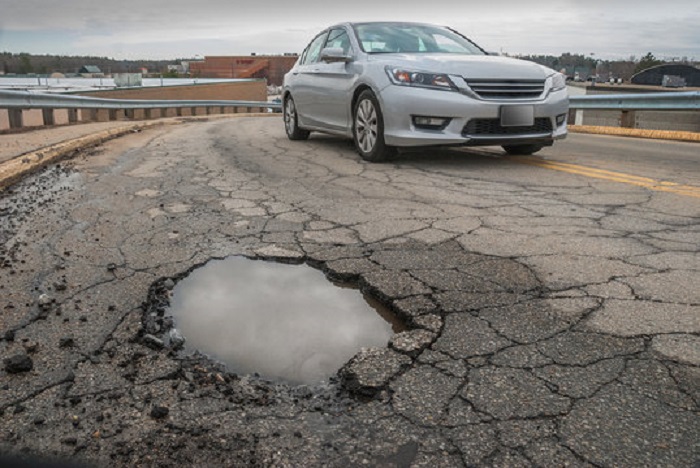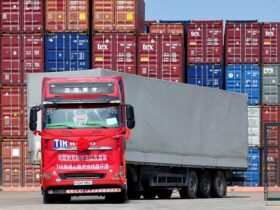Tarmac resurfacing is a specialised service that involves repairing and rejuvenating existing tarmacadam (commonly referred to as “tarmac”) surfaces. Tarmac is widely used in driveways, roads, parking lots, and other paved areas due to its durability, affordability, and ease of maintenance. Over time, however, these surfaces can degrade, requiring professional resurfacing to restore their functionality and appearance.
Understanding Tarmac Resurfacing
Tarmac resurfacing typically includes cleaning the existing surface, repairing any cracks or potholes, and applying a new layer of tarmac over the old one. This process enhances the structural integrity of the surface while providing a fresh, smooth finish.
Professionals use specialised equipment and materials to ensure that the resurfaced tarmac adheres properly and lasts for years. The process may vary slightly depending on the condition of the existing surface and the intended use of the area.
Common Problems Addressed by Tarmac Resurfacing
- Cracks and Potholes: Weather conditions, heavy traffic, and age can lead to cracks and potholes in tarmac surfaces. Resurfacing addresses these issues by creating a uniform layer that seals imperfections.
- Fading and Discolouration: UV exposure and natural wear can cause tarmac to lose its vibrant colour. Resurfacing revitalises the surface, restoring its original appearance.
- Drainage Issues: Poorly maintained tarmac can lead to pooling water, which accelerates damage. Resurfacing ensures proper leveling and improves drainage.
- Uneven Surfaces: Heavy usage can result in dips and uneven areas. A fresh tarmac layer corrects these issues, improving safety and usability.
Benefits of Tarmac Resurfacing
1. Enhanced Durability
Resurfacing extends the lifespan of tarmac surfaces by addressing underlying issues and reinforcing the structure. This makes it an ideal solution for high-traffic areas like roads and parking lots.
2. Cost-Effectiveness
Compared to completely replacing a tarmac surface, resurfacing is significantly more affordable. It provides a like-new finish without the expense and time commitment of full reconstruction.
3. Improved Safety
Cracks, potholes, and uneven surfaces can pose safety risks to vehicles and pedestrians. Resurfacing eliminates these hazards, ensuring a smoother and safer surface.
4. Aesthetic Appeal
A freshly resurfaced tarmac area looks clean, professional, and well-maintained. This is particularly important for businesses where first impressions matter.
5. Environmental Benefits
Resurfacing uses fewer materials than a full replacement, reducing waste and the environmental impact of the project. Modern techniques also incorporate eco-friendly materials when possible.
The Tarmac Resurfacing Process
Step 1: Assessment and Preparation
Professionals begin by inspecting the existing surface to evaluate its condition. They identify areas that require repair and ensure the site is ready for resurfacing by removing debris and cleaning the surface.
Step 2: Repairs
Cracks, potholes, and damaged sections are repaired to create a stable base. This step is crucial for ensuring the longevity of the new tarmac layer.
Step 3: Application of New Tarmac
A fresh layer of tarmac is applied evenly across the prepared surface. Specialised machinery ensures proper compaction, which is essential for durability and a smooth finish.
Step 4: Finishing Touches
Edges are smoothed, and the surface is allowed to cure. Once the tarmac has set, it is ready for use.
Why is Tarmac Resurfacing Important?
Tarmac resurfacing is vital for maintaining the functionality, safety, and appearance of paved areas. Whether it’s a residential driveway or a busy roadway, neglecting necessary repairs can lead to further deterioration and higher costs in the future.
Maintenance of Infrastructure
Properly maintained tarmac surfaces are crucial for infrastructure longevity. Resurfacing ensures that roads and pathways remain usable, reducing the need for costly and disruptive replacements.
Prevention of Accidents
Damaged tarmac increases the risk of accidents for vehicles and pedestrians. Regular resurfacing mitigates these risks, promoting safer environments for all users.
Cost Savings
Addressing minor issues with resurfacing prevents larger, more expensive problems down the line. It’s an investment that pays off by extending the lifespan of the surface.
Contribution to Community Appeal
For businesses and local councils, well-maintained tarmac surfaces contribute to the overall appeal of the community. They demonstrate a commitment to quality and care, enhancing public perception.
Conclusion
Tarmac resurfacing is a crucial service for maintaining the durability, safety, and aesthetic value of paved surfaces. By addressing common issues like cracks, potholes, and fading, resurfacing not only prolongs the life of the tarmac but also offers a cost-effective and environmentally friendly solution. Whether for residential or commercial applications, investing in professional tarmac resurfacing ensures long-lasting, high-quality results.













Оставить коммент.